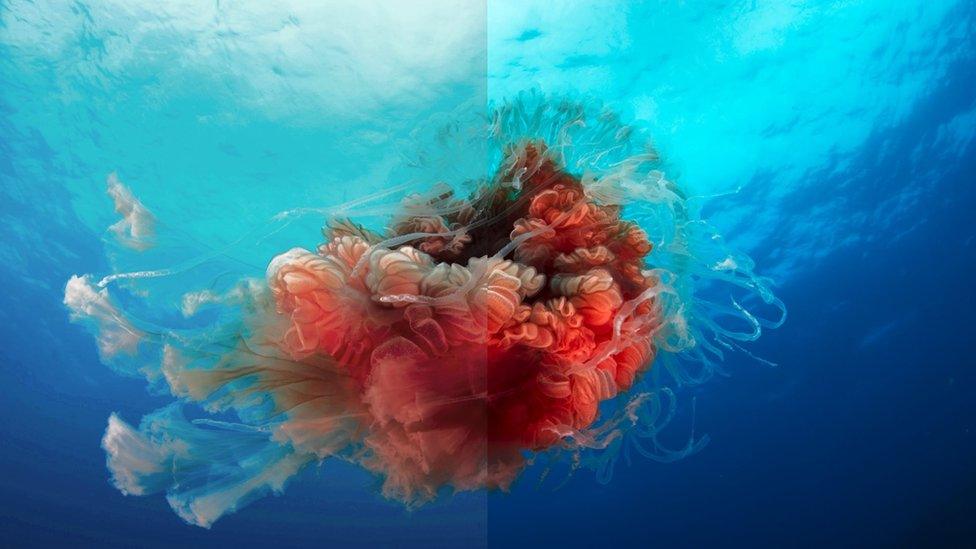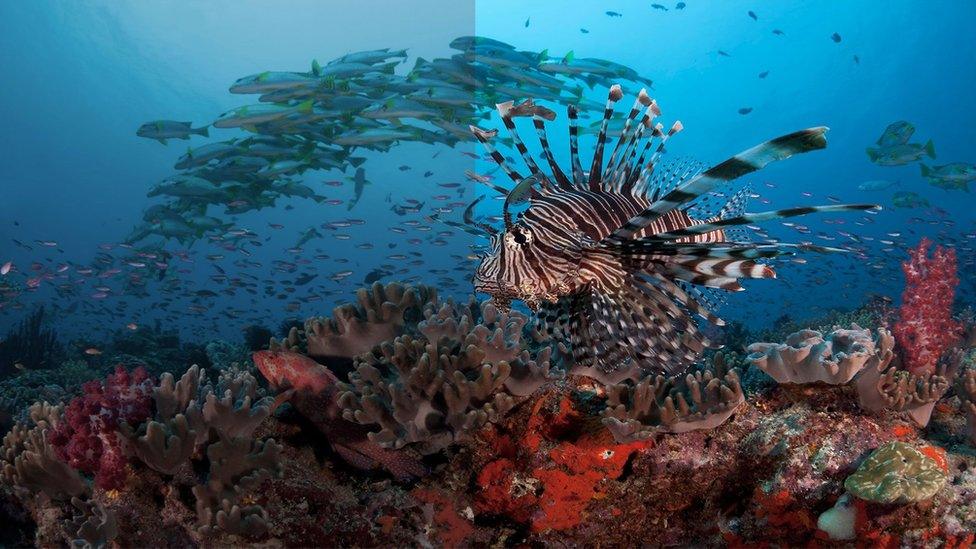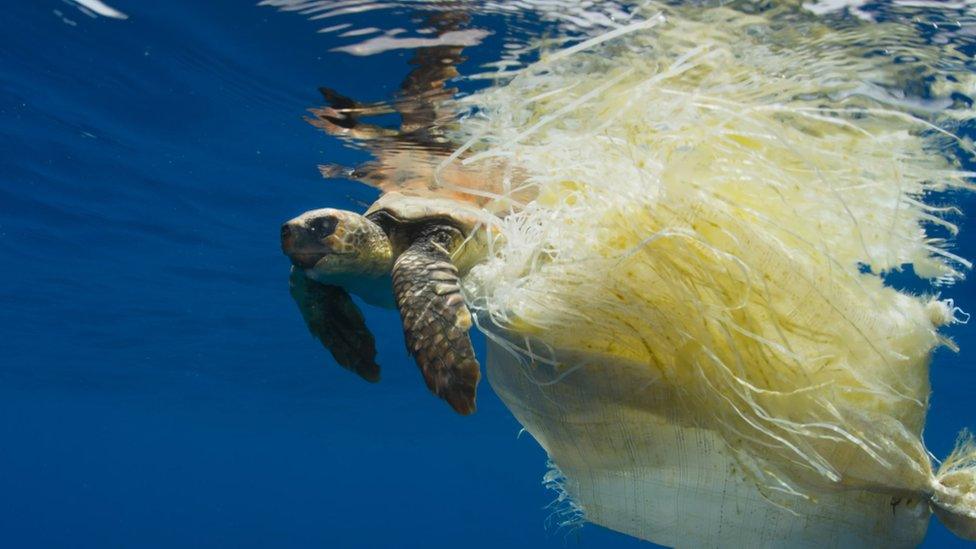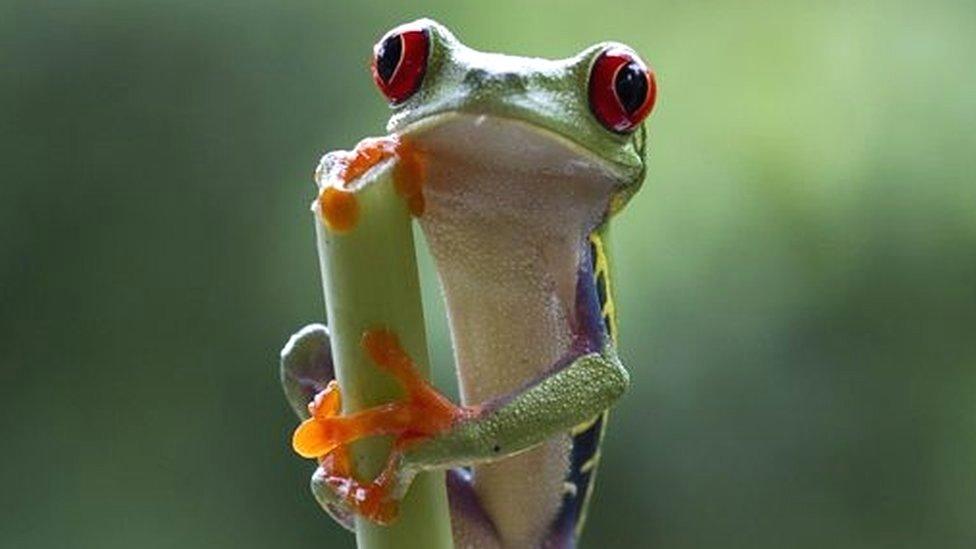Blue Planet II comes to iPlayer in 4K HDR
- Published

This simulated image shows - on the right-hand side - the advantage of using high dynamic range
The BBC's Blue Planet II programme is to become its first TV series to be made available in 4K resolution and high dynamic range (HDR) colour via its iPlayer catch-up service.
All seven episodes of the marine-themed show are being made available to UK-based owners of select TVs.
Until now, the BBC had only released programmes in this format via ultra-high definition (UHD) Blu-ray discs.
Netflix and Amazon already stream some of their shows in 4K and HDR.
The BBC suggested that owners of compatible screens should enjoy "the spectacular animals, vibrant coral reefs and deep blue oceans" as never before.
More vivid
The term 4K refers to the fact an image has four times as many pixels as a 1080p HD one, meaning it should appear more detailed and crisp.
However, to appreciate this, viewers need to be sitting close enough to a large enough television, otherwise their eyes cannot tell the difference.

Compatible TVs will offer the option of watching in 4K and HDR
As such, many experts agree that HDR actually has more impact. It takes advantage of the fact screens can go brighter and/or darker than they used to be able to, providing a greater dynamic range.
As a result, the shadows of an image can be made less murky while the highlights - including light glinting off water - can be given more impact.
HDR also uses a wider colour space - meaning it can show millions more colours than SDR - which should make Blue Planet II's sea life appear more realistic.
"It's very obvious the amount of colour that HDR gives you over normal pictures," commented Becky Roberts from What Hi-Fi magazine.
"It's definitely more impressive than the extra resolution alone, and it really lends itself to showing off the colourful coral reefs and other ocean images.
"But it has been quite a slow process by the BBC to get to this point."
Live HDR broadcasts
Snippets of an earlier series, Planet Earth, were shown on iPlayer last year in 4K and HDR as part of an earlier trial.
But part of the reason the BBC has taken until now to provide a complete show is that it is trying to pioneer a new HDR format.
While Netflix and Amazon rely on existing technologies - known as HDR10 and Dolby Vision - to deliver extra colour information, the BBC has teamed up with the Japanese broadcaster NHK to create something called hybrid-log gamma (HLG).
HLG is designed to be better suited to live broadcasts of sport and other events because it does not need to provide metadata - data about other data - unlike the other formats.
"Metadata is extremely difficult to relay through live production workflows," explained BBC Research & Development's principal technologist Andrew Cotton.
"The equipment just doesn't support it - and we know from where metadata is used elsewhere, it gets lost, it gets corrupted. It's a real problem."

The BBC suggests that HLG can match Dolby Vision in terms of quality
HLG does have some theoretical downsides. It is not capable of describing as wide a dynamic range as Dolby Vision, nor can it provide information to calibrate the image to particular TV models.
But Mr Cotton suggested that in practice viewers would not be disadvantaged.
"HLG still exceeds the capabilities of the human visual system, and doesn't need the 28 stops of dynamic range [that Dolby does]," he said.
"Nor does it need the metadata to adapt the signal to different brightness displays.
"We've done some demos, and you can't see the difference between the two."
The BBC plans to release the special edition of Blue Planet II immediately after the final episode is broadcast on BBC One on Sunday.
Close to 400 TV models and Roku's Streaming Stick+ 4K are included in the trial.
Sky's Q Platform will also be able to stream the programmes in 4K, though not HDR, which it has yet to support.
But there are still notable exceptions - neither Apple nor Amazon's latest set-top boxes offer compatible versions of iPlayer. Sony's top-end ZD9 and A1 sets are also currently excluded, although the Japanese firm said that they would soon be added.
The BBC has yet to reveal when other programming will be released in the format.
- Published19 November 2017

- Published28 November 2017

- Published8 December 2016
